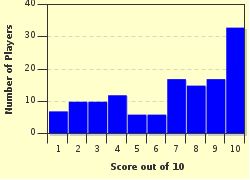Quiz Answer Key and Fun Facts
1. I am the only endemic gull species of New Zealand. I am not as common as other gull species but I am immediately distinguished by the colour of my bill.
2. I am New Zealand's only diurnal endemic raptor. I have a fast wingbeat, dark colouring and a short hooked beak. I form my nest on bare ground under rock ledges or under fallen branches but also sometimes in the fork of a tree. I am not very common.
3. There are approximately 129 of me left. I am one of New Zealand's endemic parrots and I have green and yellow plumage. I have a strong smell (that has been compared to passionfruit) and the male of my species makes a loud booming call for mating.
4. I am an extremely intelligent endemic parrot found in the South Island. My plumage at first glance is greenish brown but the undersides of my wings are brilliantly coloured. I am known to peck at people's cars and destroy their windscreen wipers and tyres.
5. I am a large, bluish coloured bird that doesn't fly very well. I can be identified by the characteristic blue wattles under my beak. I feed on berries, insects and leaves.
6. I am New Zealand's iconic bird.
7. I am a large, flying bird which feeds on the fruits and leaves of both native and exotic trees. I have a green head, a white apron and a brownish-green coloured body. I am endangered because of predators, but am increasing in numbers due to predator control efforts. Maori used to eat me.
8. I am the smallest of the penguin species, and though I am native to New Zealand, I also occur in Australia and Tasmania. I feed on squid and small fish and am a bluish-grey colour.
9. I am a well known but rarely seen member of the rail family. I have turquoise and green plumage, a bright red beak, and short, thick red legs. I was considered extinct for the first half of the 1900's.
10. I am also a well-known bird of New Zealand. When you walk through native bush, you are likely to hear my distinctive call of bell-like notes, clicks, cackles and wheezes. I have a tuft of white feathers at my throat and there is a beer named after me.
Source: Author
LeCapitaine
This quiz was reviewed by FunTrivia editor
crisw before going online.
Any errors found in FunTrivia content are routinely corrected through our feedback system.

